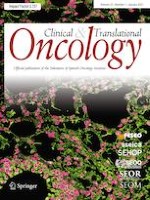Erschienen in:

01.06.2020 | Research Article
Correlation between the contrast-enhanced ultrasound image features and axillary lymph node metastasis of primary breast cancer and its diagnostic value
verfasst von:
H. Xu, G. L. Xu, X. D. Li, Q. H. Su, C. Z. Dong
Erschienen in:
Clinical and Translational Oncology
|
Ausgabe 1/2021
Einloggen, um Zugang zu erhalten
Abstract
Purpose
To analyze the correlation between contrast-enhanced ultrasound image features and axillary lymph node metastasis of primary breast cancer and its diagnostic value.
Methods
In this study, 64 patients with axillary lymph node metastasis of primary breast cancer diagnosed and treated in our hospital from February 2011 to March 2013 were collected as an observation group, and 54 patients without axillary lymph node metastasis were collected as a control group. All patients underwent a contrast-enhanced ultrasound examination, and the correlation between the contrast-enhanced ultrasound image features and axillary lymph node metastasis and its diagnostic value were analyzed. They were divided into two groups according to their survival conditions: the group with good efficacy and group with poor efficacy, and the prognostic factors of breast cancer in the two groups were analyzed.
Results
There were statistical differences in the peripheral acoustic halo, blood flow classification, ratio of length to diameter (L/D), maximum cortical thickness, and enhancement mode of lymph nodes between the two groups (p < 0.05). The area under ROC curve for diagnosis of axillary lymph node metastasis by contrast-enhanced ultrasound was 0.854, sensitivity was 83.33%, and specificity was 87.5%; L/D and enhancement mode were independent prognostic factors for breast cancer.
Conclusions
Contrast-enhanced ultrasound image features have diagnostic and prognostic value for axillary lymph node metastasis of breast cancer.











